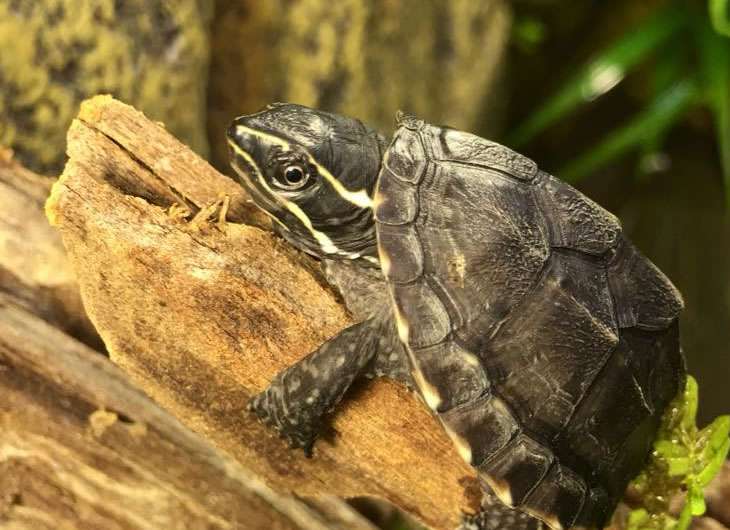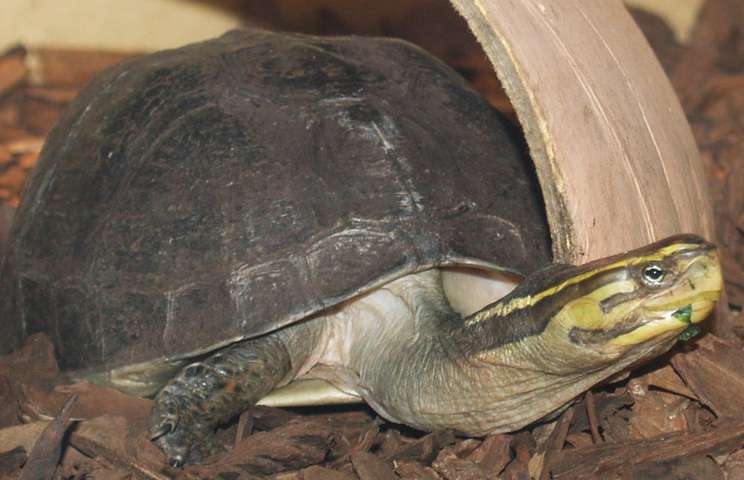
Small water turtles known as musk turtles are native to the United States. Although Musk turtles and Mud turtles are frequently mistaken, Musk turtles are typically a little larger and have shells that slope more steeply. Due to their small size, musk turtles are a common choice for pet turtles.
Mostly carnivorous, musk turtles eat frogs, insects, tiny fish, mollusks, and worms for food. They occasionally stroll down the riverbed, but they also prefer areas with a lot of aquatic vegetation so they can seek their prey.
Care as a Pet

Housing
Water turtles include musk turtles. They can be found in lakes, rivers, ponds, and small streams with clear water. They are present in a wide variety of permanent bodies of water. They favour the shallower areas of the body of water they live in. On tree trunks and branches that dangle over water, this genus can be seen soaking up the sun. They flourish in temperate climates because they are North American turtles.
Being an aquatic reptile, the musk turtle requires an aquatic environment. Aquariums and tiny ponds, such koi ponds, are suitable enclosures. Since they prefer shallow waters, as was already mentioned, they don’t need a tall aquarium. How much liquid should it contain? The water should be deep enough for the turtle to swim in, yet shallow enough for it to touch the bottom and still be able to stretch to the surface. I suggest a tank with a size of 20 to 40 gallons. A 20-gallon tank, such as the Marina Led Aquarium Kit (20 Gallons), is adequate for one adult.
Heat
The turtle needs to be kept at a comfortable temperature to ensure its survival. The ideal temperature range for these turtles is 70 to 90 F. Since the majority of rooms have an appropriate temperature, it is typically not essential to heat the aquarium. The ideal water temperature is 75 degrees Fahrenheit. The ideal basking temperature is 90 degrees Fahrenheit. A ceramic heat lamp. To assist you in maintaining the proper temperature range, use a thermostat.
Feed
Because they are predominantly carnivorous, musk turtles may not eat plant items. Musk turtles consume a variety of aquatic creatures in the wild, including frogs, crabs, worms, mollusks, and even carrion. Small prey including beetles, millipedes, worms, and tiny snails are what juveniles eat. Adults like to devour larger prey, including clams. Sometimes, musk turtles will eat plant food like water weeds and duckweed (Elodea). Commercial turtle diets are a great option for meals. These are not only practical, but they also give the turtle all the nutrients it needs. The majority of pet stores carry these foods. Insect farms are an option as well. When you need to feed multiple amphibians and reptiles, these are helpful. The mealworms and shrimp in Sequoia Aquatic Turtle Medley Food are readily ingested. Live prey can be provided to mimic feeding. However, if the turtle will eat commercial turtle food, it is strongly advised to do so because it has all the necessary nutrients. With captive-bred reptiles, nutrient shortage can be a major issue.
Table





